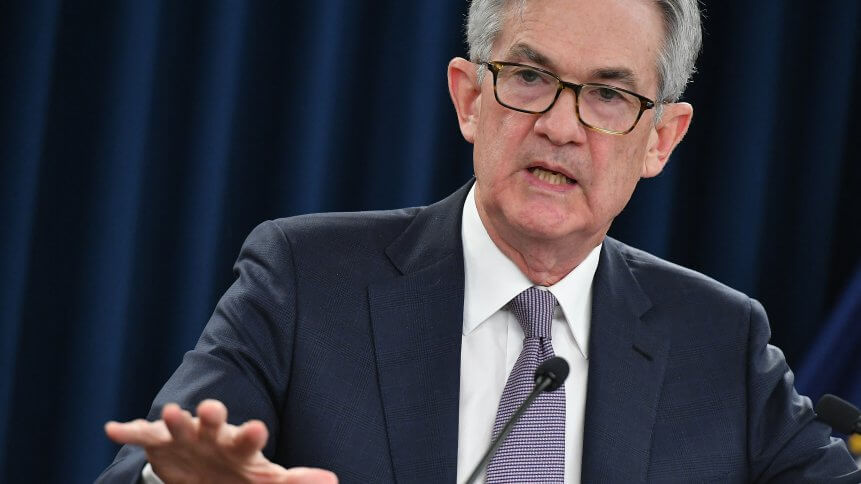Will the digital dollar eliminate cold hard cash?

- Federal Reserve believes the adoption of digital currency would need careful preparation but it would be a momentous step for the financial system
- The project however is not something to be rushed on as officials warn the need to address vital issues ranging from privacy to financial stability
- Experts attest that a cashless society will not be a utopia — it will involve complicated trade-offs
Printed money didn’t come into widespread use until the 17th century when it was adopted by Europeans and they could exchange their notes for actual gold. Now we’re on the cusp of arguably the biggest potential transition yet: ditching cold, hard cash for a digital dollar. Since the pandemic first happened, the idea of a digital greenback elicited support from US Treasury Secretary Janet Yellen and Federal Reserve Chair Jay Powell.
The idea of a digital dollar however came as early as 2002 when the Organization for Economic Cooperation and Development declared “Money’s destiny is to become digital.” And, indeed, in many developed countries today, cash usage is clearly in decline. An October 2020 report by McKinsey stated that payments revenues shrank by around 22% (equivalent to roughly US$220 billion) in the first six months of 2020 alone.
“With lockdowns imposed across many nations, cash usage dropped in step with severe demand-side shock. After an initial spike in cash withdrawals ahead of lockdowns observed in Germany and the US, concerns around the risk of contracting Covid-19 from high-traffic ATMs and the refusal of some merchants to accept cash (in spite of it being legal tender) pushed consumers towards e-payment options.
“With scientists and the WHO now emphasizing aerosol transmission of the virus over its spread by touch—and the WHO being swift to confirm cash does not carry coronavirus—these early fears have still contributed to a reduction in global cash payments of four to five percent,” it said.
The reduction is equivalent to four to five times the annual decrease in cash usage over the past few years, according to McKinsey. The report also highlights how cash usage varies greatly by region. Sweden, the UK, and the Netherlands are among the countries with the lowest cash transaction volumes.
The slow death of cash?
Truth be told, money is edging closer toward its biggest reinvention in centuries as central banks start to embrace the creation of digital currencies. The idea behind central-bank digital currencies is that, unlike conventional electronic money, they aren’t bound up with regular banks. Nor are they debts, as on a credit card. And they certainly aren’t a privately created currency like Bitcoin.
The US Federal Reserve revealed last year that a group from the Boston Fed is working with the MIT Media Lab in Cambridge, Massachusetts on a research project to construct and test a hypothetical digital dollar, but Chair Jerome Powell insists it’s more important to be right than first.
Powell recently joined international peers in saying the launch of a digital currency would be a momentous step for the financial system that needs careful preparation. “We have an obligation to be on the cutting edge of understanding the technological challenges as well as potential the costs and benefits of a digital dollar. We don’t need to rush this project.”
The implications of the digital dollar
While the Fed and the European Central Bank are both looking into digital currencies, any potential introduction is frankly still years away. A digital dollar would require consultation with lawmakers, and probably legislation. Bloomberg’s report quoted Bank of International Settlement’s GM Agustin Carstens who believes that “There is one particular issue: It cannot fail. It cannot fail at any particular point in time. To ensure that type of resilience, it takes a lot.”
Sensing a foreshadowing threat to their profits, the banks’ main trade group has told Congress a digital dollar isn’t needed, while payment companies like Visa Inc. and Mastercard Inc. are trying to work with central banks to make sure the new currencies can be used on their networks.
As soon as July, officials at the Federal Reserve Bank of Boston and the Massachusetts Institute of Technology, which have been developing prototypes for a digital dollar platform, plan to unveil their research, said James Cunha, who leads the project for the Boston Fed.
Cunha also said he hopes to unveil some of their work in the third quarter, including at least two prototype software platforms that could move, store and settle transactions made with digital dollars. He wouldn’t say if either platform uses the blockchain technology that underlies Bitcoin and other cryptocurrencies. Once the prototypes are released, Cunha said, others will be able to see and build on the code.










